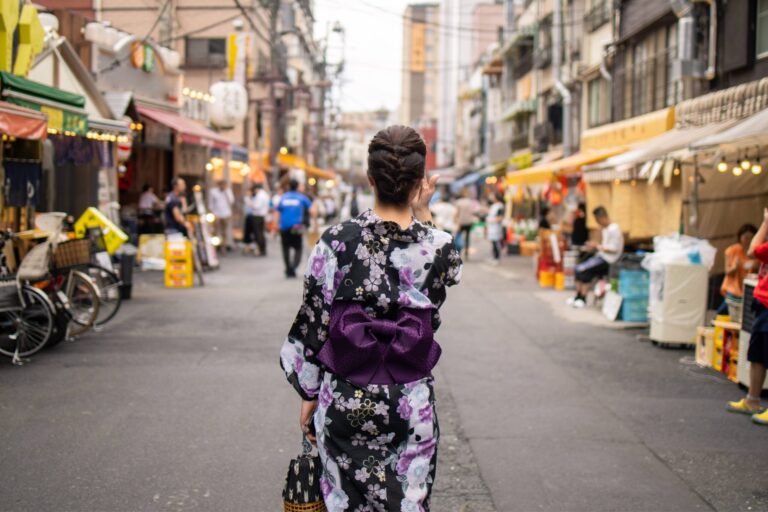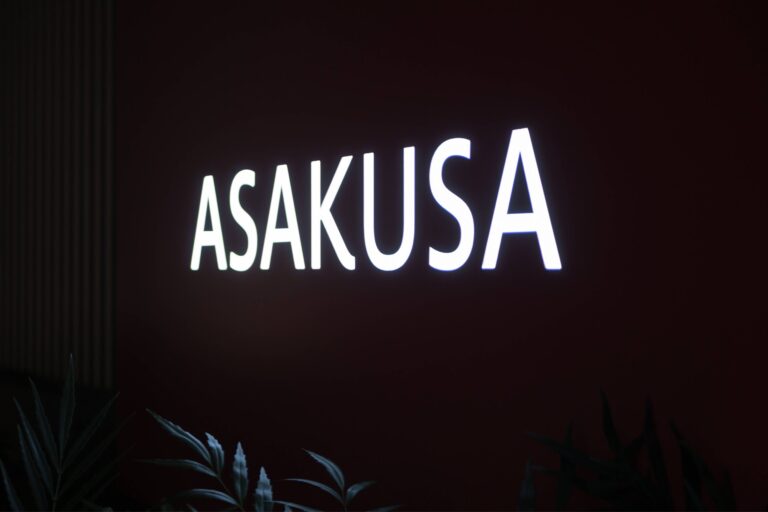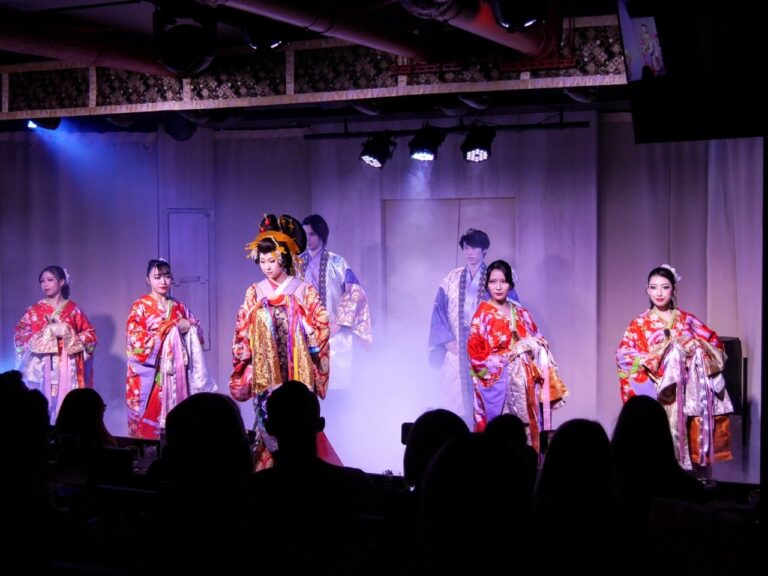Asakusa, the cultural center of old Edo-period Japan, is a highly popular destination known worldwide.
This historical area within Taito City (a Tokyo ward) is famous for the iconic Kaminarimon Gate and Sensoji Temple, but many visitors only travel here during the day. They miss the true magic: Asakusa at night.
When the stores and shops lined along the Nakamise close, the daytime crowds disappear, and the district transforms into a serene, spectacularly illuminated setting, offering a perfect blend of traditional Japanese culture and lively, local experiences for 2025 travel plans.
This guide provides updated information on the best spots and activities, including dining, entertainment, and sightseeing, to make your Tokyo trip truly unforgettable.
I. The Serene Light and Historical Attractions
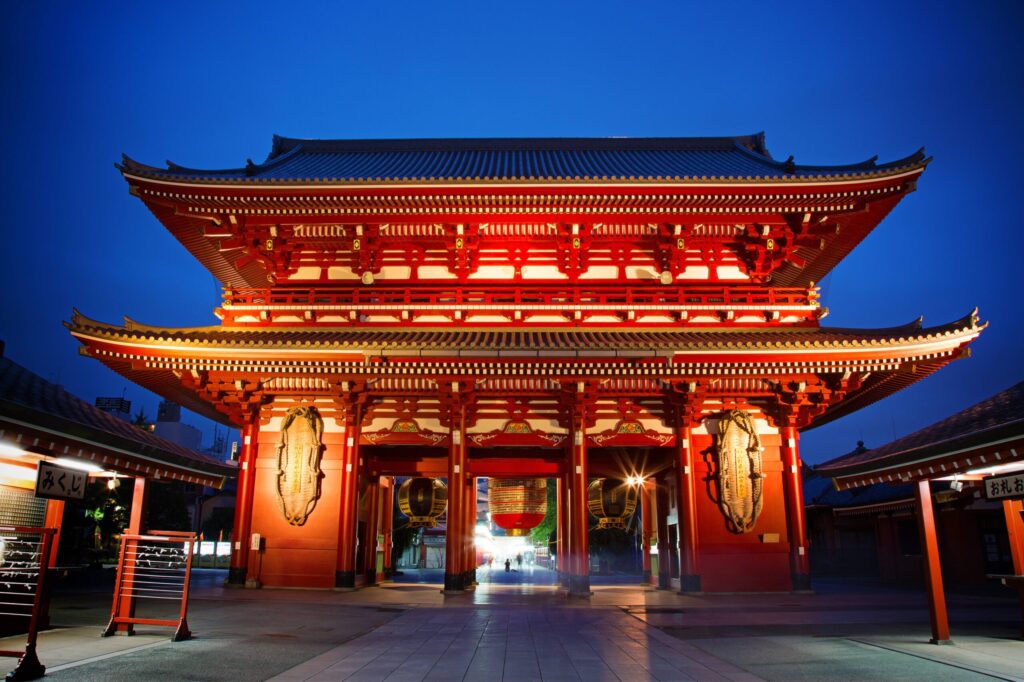
The evening in Asakusa offers a peaceful, almost historical feel to your tour, allowing you to appreciate the intricate architecture without the distraction of the daytime crowds. The charm of the illuminated old town is simply stunning.
- Experience the Illuminated Sensoji Temple & Shrines
The temple grounds are one of the most magnificent free attractions in Tokyo. After 5:00 PM, the main building and the Hozomon Gate are lit up, bathing the area in a mystical glow. The vibrant red lantern of the Kaminarimon Gate is particularly striking at night, making for incredible photos that are worth framing. It is an ideal spot for quiet contemplation, allowing for a long appreciation of the temple’s history, which dates back to the 7th century. You can easily spend an hour here visiting the main temples and smaller shrines.
- Tokyo Skytree: The City’s Best View
Just across the Sumida River, the Tokyo Skytree is usually open late. It offers a breathtaking panoramic night view of the entire city. Check the official website for late hour access to the observation deck and floor. From the observation deck, you gain a fantastic perspective of Tokyo’s vast night sky, contrasting sharply with the smaller, historical buildings of Asakusa.
- Sumida River Night Cruise & Ueno Park
For a special and relaxing view, consider a night cruise. You’ll see a wide range of illuminated architecture, and feel the cool night air from the river. Nearby Ueno Park remains open, offering a quiet space for an evening stroll, though the museums are closed. You can also learn a bit more about Edo history here.
II. Dining & Drinking: The Energetic Local Experience
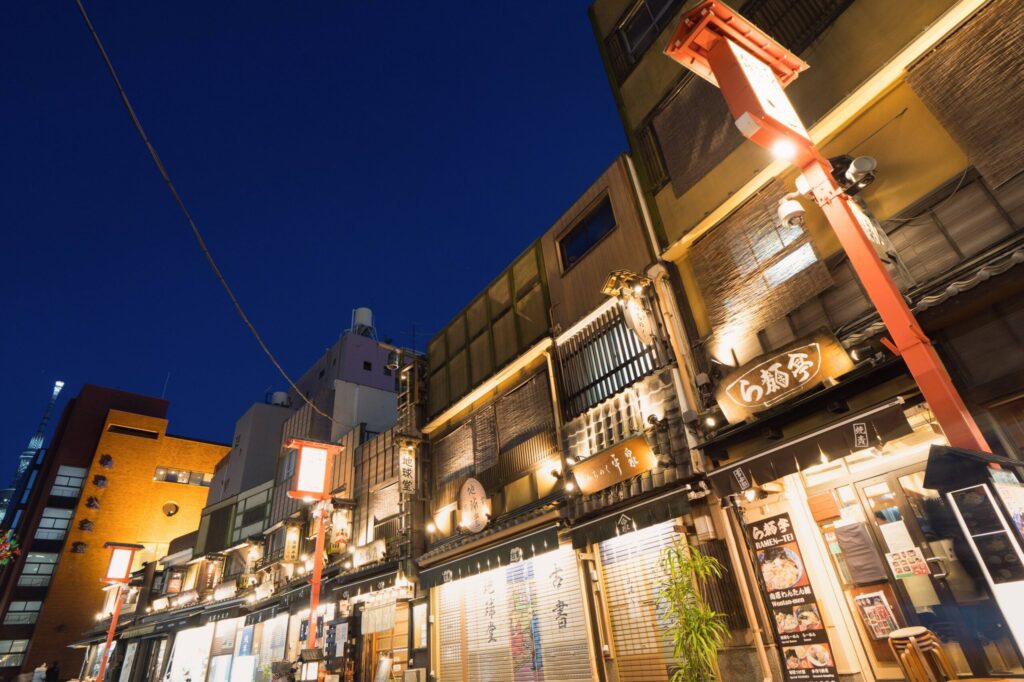
Once you have had a taste of the quiet beauty, it’s time to dive into the most energetic part of Asakusa’s night. This is where the true local vibe of the Edo commoners’ district lives on.
- Hoppy Street: The Budget Bar-Hopping Vibe
For a genuine local experience, exploring “Hoppy Street” (Hoppy Dori) is a must. This vibrant area is lined with casual restaurants and bars that spill out onto the street. It’s the perfect place for drinking the classic low-malt beer alternative, “Hoppy.” Most restaurants offer a “Hoppy Set” which includes the Hoppy bottle and shochu.
- The Food & Menu: The menu here is simple but delicious. Many shops specialize in nikomi (beef stew), yakitori, tempura, and seasonal sushi. The dishes are served in a Japanese-style atmosphere. The kind of fried food (like kushikatsu) and hot sauce served varies by shop. You can find great food on any budget.
- The Service: The friendly service staff at these small restaurants can often recommend dishes, even if you only know a bit of Japanese.
- Sweets, Souvenirs, and Shopping
While the main Nakamise Dori is closed at night, some of the nearby shops may still be open, offering souvenirs or late-night sweet treats. The flavor of the local sweets made with bran is a great way to end your dinner. For a different experience, the Denki Building and surrounding areas have unique shops open later.
III. World-Class Entertainment: Culture on Stage
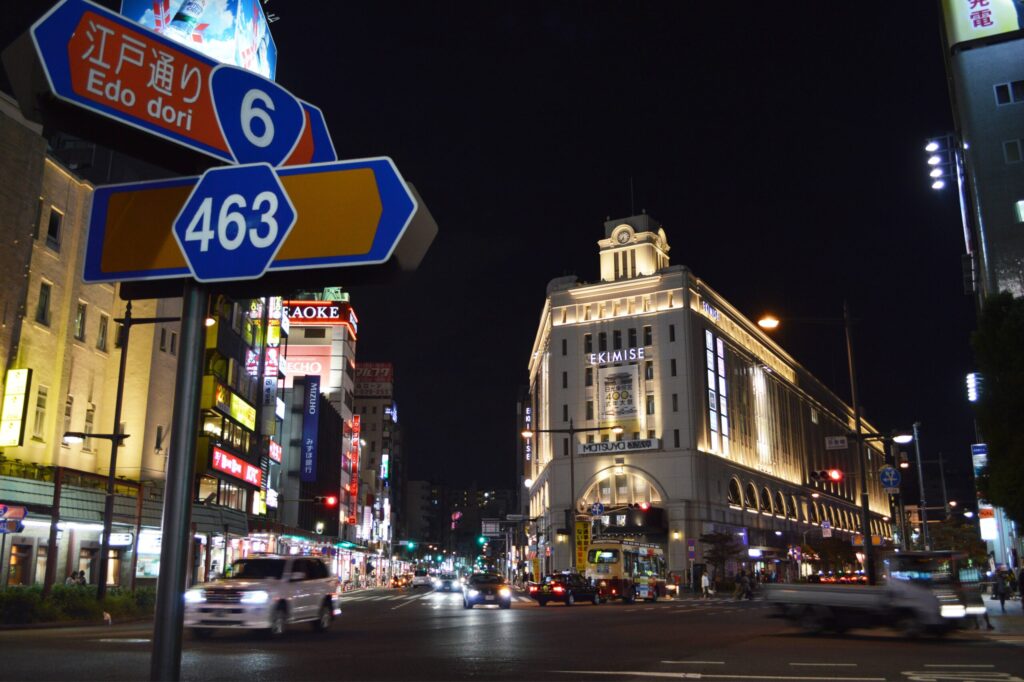
For the ultimate cultural highlight of your evening, visit Asakusa’s premier show theater, located just minutes from the station.
- Asakusa Kaguwa: Geisha & Samurai Show
If you are looking for world-class entertainment that showcases Japanese culture without language barriers, Asakusa Kaguwa is the definitive choice. This unique show theater, located only a small walk from Asakusa Station, presents a stunning, 60-minute non-verbal performance. Professional performers dressed as elegant Geisha (kimono clad) and powerful Samurai deliver an unforgettable experience. It’s a spectacular fusion of art, traditional dances and music, and modern staging, making it a highly popular attraction.
- Booking: It is highly recommended to book your tickets in advance on the official website to guarantee your spot, especially for weekend events.
IV. Expanding Your Tokyo Night
Your Asakusa night doesn’t have to end here. Tokyo’s efficient train system makes it easy to explore other popular areas.
- Modern Centers: Take a short ride to Shinjuku, or head to Shibuya to experience the famous crossing at night. Ginza offers a more refined, upscale nightlife with its department stores and luxurious restaurants. You could also explore Ikebukuro or Roppongi for different entertainment options.
- Culture & Sport: If you prefer culture, you could head towards Ueno Park. The Sumo Hall is also nearby in Ryogoku, and while you won’t necessarily see a match, you can read informational posts about the sport.
V. Final Conclusion and Q&A
Asakusa today offers a truly rich and enjoyable night experience, combining the tranquility of illuminated temples with the lively vibe of Hoppy Street. From delicious dishes to world-class entertainment, it is one of the best places in Tokyo to feel the traditional charm of Japan after dark. Book your tour and plan to make memories that will last for years.
❓ Your Asakusa Night Q&A
Q: Is Asakusa safe for visiting at night?
A: Yes, the area is very safe, even for solo travel. The main streets and the temple grounds are well-lit with illuminations. Public transportation runs until about midnight.
Q: Is Kyoto better for tradition than Asakusa?
A: Both are excellent, but Asakusa offers the original Edo vibe right in the center of modern Tokyo. Kyoto is historically older, but Asakusa has its own unique, accessible Japanese-style charm.
Q: Where can I find a map of Hoppy Street?
A: While physical maps may be at the station, using Google Maps on your phone is highly recommended. The street is small and easy to navigate once you are there.
Q: Are there any late-night matsuri (festivals)?
A: Major matsuri (events) like Sanja Festival are annual and typically run during the day, but Asakusa often hosts smaller events at night, particularly during spring and summer. Check local listings for late-night festival events.
Q: Do any of the restaurants have private rooms?
A: Some of the larger, more business restaurants offer private rooms for dinner, especially those specializing in high-end sushi or tempura.
Q: Can I find different flavors of sake (Japanese rice wine)?
A: Yes, many of the bars and restaurants on Hoppy Street and nearby areas offer a wide range of sake flavors and brands to order.
Q: How do I get to the Tsukiji market from Asakusa?
A: You can take the train (Subway Hibiya Line) for a direct connection, making it easy to head to the market for an early breakfast after your night in Asakusa.
脚注 (Footnotes)
[1] 和風ショーシアター浅草香和公式サイト: https://www.asakusa-kaguwa.com/


